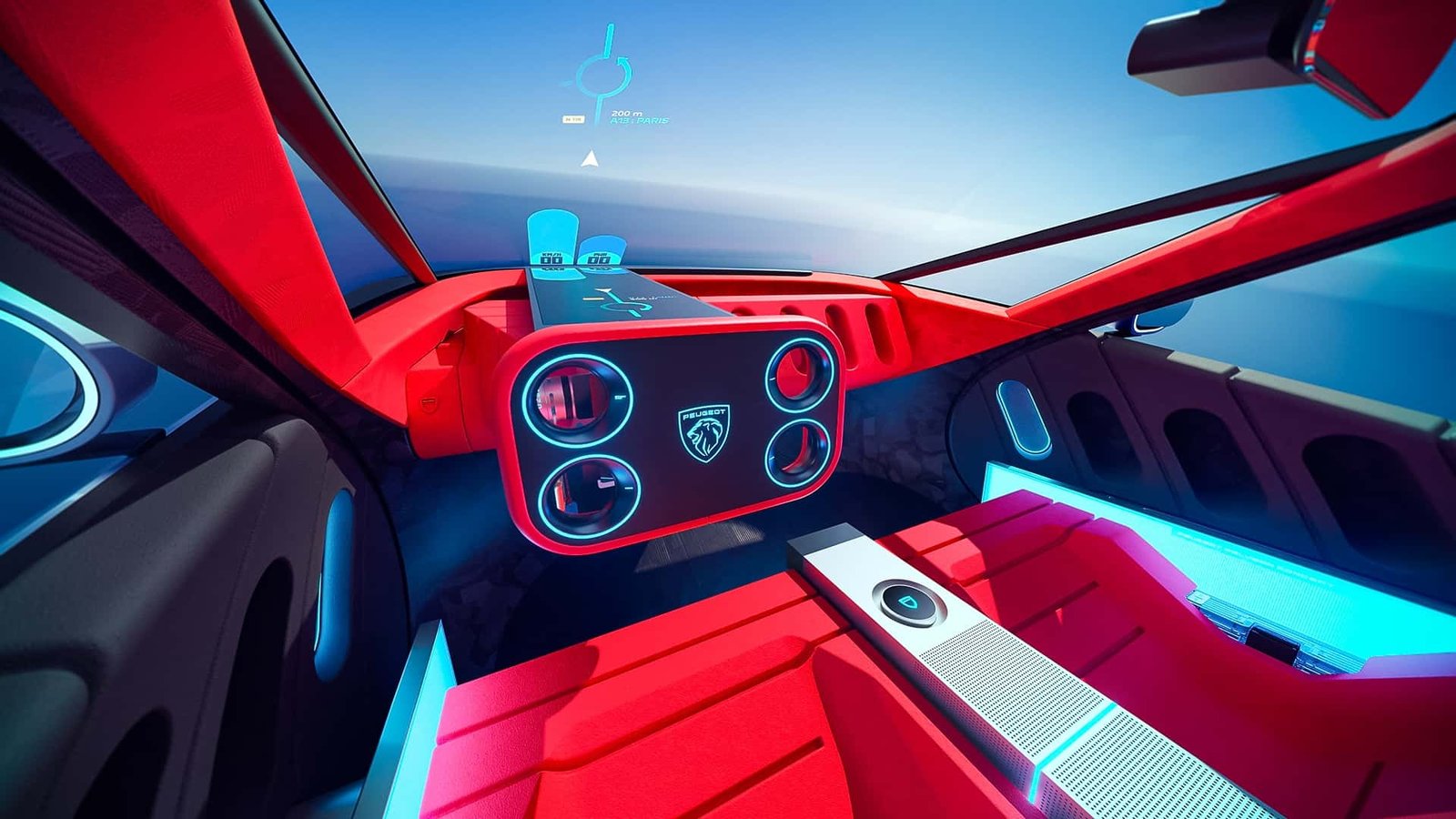Peugeot has a long history of breaking the mold in design, and its newest concept is a testament to the enduring French flair. The Polygon proves it’s still hip to be square in 2025, adopting an aggressively angular design that continues inside. Open the gullwing doors and you’ll see how the Stellantis brand is once again trying to reinvent the wheel.
Resembling an oversized video game controller, the steering wheel features an unconventional rectangular shape we’ve actually seen before. Peugeot first introduced the so-called Hypersquare on the 2023 Inception concept, and its return here is a clear sign that a production car will soon adopt the quirky design. In fact, the company refers to it as a “tangible reality,” suggesting it’s on the way.
Peugeot confirms that the concept’s steer-by-wire setup will debut on a series-production vehicle in 2027. It eliminates the mechanical link between the steering wheel and the front wheels while offering a variable steering ratio that adapts to the vehicle’s speed. The Hypersquare has a maximum rotation of 170 degrees in each direction, so less than a complete turn (360 degrees). By contrast, a traditional wheel goes from lock to lock in three full rotations (1080 degrees).
Combining steer-by-wire technology with the new steering wheel is said to make the car easier to maneuver during parking or tight turns. At higher speeds, only a “small input” is needed to adjust the car’s trajectory. Peugeot is confident the setup performs better in all situations, but the French aren’t the first. Infiniti introduced steer-by-wire more than a decade ago in the Q50, eliminating the traditional mechanical steering column.
Photo by: Peugeot
Because the Polygon is purely a concept, Peugeot had complete freedom to go wild with the styling. However, the showcar does preview a new design language we’ll likely see on the next-generation 208. Expect the supermini to forgo the gullwing doors and other exaggerated details, such as the windscreen doubling as a giant display.
Seeing gullwing doors on such a small car brings to mind the quirky Autozam AZ-1, although at nearly four meters long, the Polygon is considerably larger. It still qualifies as a subcompact by European standards, and we expect the production version to include rear doors. While the 208 was once available as a three-door, buyers today prefer the added practicality of rear doors. That’s why rivals like the VW Polo and SEAT Ibiza have also gone five-door-only.

25
Source: Peugeot
Although the concept appears to have traveled back from the future, the wheels and rear pillar details are a clear throwback to the 205 GTi. The square taillights likely nod to the 1980s hot hatch, blending retro cues with modern design. How much of this styling will carry over to the next 208 remains unclear, but a boxier look inside and out is expected.
The supermini will likely ride on the STLA Small platform, which it will share with the next-generation Opel Corsa. As with the current models, both combustion-engine and electric versions are expected to cover all market needs. Stellantis previously confirmed the platform supports EVs with a maximum range of 500 kilometers (311 miles) and has assigned its Spanish plants in Vigo and Zaragoza to produce the small cars built on it.
